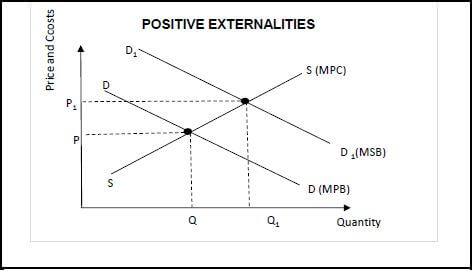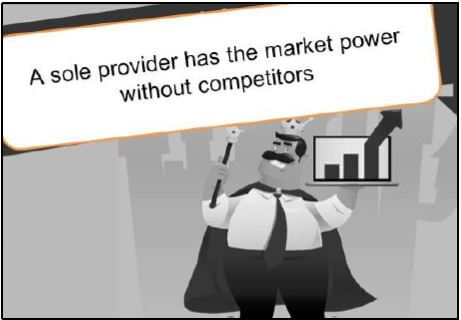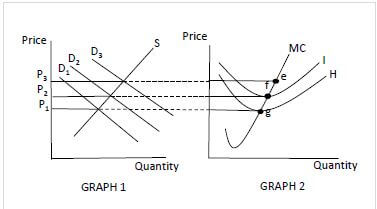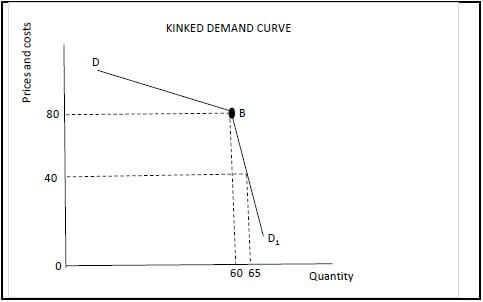ECONOMICS PAPER 2 GRADE 12 QUESTIONS - NSC EXAMS PAST PAPERS AND MEMOS JUNE 2019
Share via Whatsapp Join our WhatsApp Group Join our Telegram GroupECONOMICS
PAPER 2
GRADE 12
NSC EXAMS
PAST PAPERS AND MEMOS JUNE 2019
INSTRUCTIONS AND INFORMATION
- Answer FOUR questions as follows in the ANSWER BOOK:
SECTION A: COMPULSORY
SECTION B: Answer TWO of the three questions.
SECTION C: Answer ONE of the two questions. - Answer only the required number of questions. Answers in excess of the required number will NOT be marked.
- Answer the questions in full sentences and the format, content and context of your responses must comply with the cognitive requirements of the questions.
- Number the answers correctly according to the numbering system used in this question paper.
- Write the question number above each answer.
- Read ALL the questions carefully.
- Start EACH question on a NEW page.
- Leave 2–3 lines between subsections of questions.
- Use only black or blue ink.
- You may use a non-programmable pocket calculator.
- Write neatly and legibly.
QUESTIONS
SECTION A (COMPULSORY)
QUESTION 1 30 MARKS – 20 MINUTES
1.1 Various options are provided as possible answers to the following questions. Choose the correct answer and write only the letter (A–D) next to the question number (1.1.1–1.1.8) in the ANSWER BOOK, for example 1.1.9 D.
1.1.1 The concept that describes the situation where all opposing market forces are in balance is known as …
- collusion.
- equilibrium.
- competition.
- demand.
1.1.2 The assumption used by economists to describe a situation where all factors remains unchanged, is known as the … rule.
- efficient resource allocation
- stagnation
- constant
- ceteris paribus
1.1.3 Cost per unit of production is called … cost.
- marginal
- total
- average
- fixed
1.1.4 The most possible barrier a business might encounter when competing with other businesses in the motor vehicle industry, for example VW, is …
- licensing.
- capital.
- technical mastership.
- lack of information.
1.1.5 Telkom is a typical example of a firm in a … market.
- monopoly
- perfect
- oligopoly
- monopolistic competitive
1.1.6 When two identical products are sold at different prices to different consumers, it is known as price …
- differentiation.
- stability.
- policy.
- discrimination.
1.1.7 Goods such as parks, beach facilities and streets are known as … goods.
- collective
- private
- consumer
- demerit
1.1.8 Most markets do not adjust rapidly to changes in supply and demand due to a lack of …
- information being made available.
- resources.
- quantities required by consumers.
- skills. (8 x 2) (16)
1.2 Choose a description in COLUMN B that matches an item in COLUMN A. Write only the letter (A–I) next to the question number (1.2.1–1.2.8) in the ANSWER BOOK, for example 1.2.9 K.
| COLUMN A | COLUMN B |
| 1.2.1 Marginal cost 1.2.2 Competition Appeal Court 1.2.3 Monopoly 1.2.4 Industry 1.2.5 Normal profit 1.2.6 Dead weight loss 1.2.7 Branding 1.2.8 Internal rate of return |
(8 x 1) (8) |
1.3 Give ONE term for each of the following descriptions. Write only the term next to the question number (1.3.1–1.3.6) in the ANSWER BOOK.
1.3.1 Costs that change according to the changes in output
1.3.2 An institution or mechanism that brings together buyers and sellers of goods and services
1.3.3 A change in price causes a smaller percentage change in quantity demanded
1.3.4 Goods that are highly desirable for the general welfare of the people but are not highly rated by the market
1.3.5 A wage set by the government below which no employer will pay their workers
1.3.6 Collusion that is open and oligopolies meet formally to decide on prices and production (6 x 1) (6)
TOTAL SECTION A: 30
SECTION B
Answer any TWO of the three questions from this section in the ANSWER BOOK. QUESTION 2: MICROECONOMICS 40 MARKS – 30 MINUTES 2.1 Answer the following questions.
2.1.1 List TWO forms of labour immobility. (2)
2.1.2 Why would you prefer to run a monopoly rather than a perfect competitor? (2)
2.2 Study the graph below and answer the questions that follow. 
2.2.1 Give an example of a positive externality. (1)
2.2.2 Complete this statement: A positive externality is a reason for … (1)
2.2.3 Briefly describe the concept private benefits. (2)
2.2.4 Explain the reason for the shift from DD to D1D1in the graph above. (2)
2.2.5 How does the government deal with positive externalities? (2 x 2) (4)
2.3 Study the information below and answer the questions that follow. 
[Adapted: Buzzle.com]
2.3.1 Give an example of a business in a monopoly. (1)
2.3.2 Identify ONE characteristic of the market structure mentioned in the cartoon above. (1)
2.3.3 Briefly describe an artificial monopoly. (2)
2.3.4 Explain a situation where the monopoly has no power. (2)
2.3.5 Why is the average revenue curve (AR) of a monopoly downward sloping? (2 x 2) (4)
2.4 Explain public goods as a reason for market failure. (4 x 2) (8)
2.5 Justify why a perfect market is unrealistic. (4 x 2) (8) [40]
QUESTION 3: CONTEMPORARY ECONOMIC ISSUES
40 MARKS – 30 MINUTES
3.1 Answer the following questions.
3.1.1 List TWO costs considered by economists in calculating profit. (2) 3.1.2 Why are individual firms in a perfect market considered price takers? (2) 3.2 Study the information below and answer the questions that follow.
WHY BUSINESS CARTELS THRIVE IN SOUTH AFRICA Manufacturers, suppliers and schools had flouted not only the rules of the Department of Basic Education but also the Competition Act. The Competition Commission launched its investigation into the sale of school uniforms in 2017 after parents and schools filed complaints about the exorbitant prices and a limited amount of suppliers. The Commission revealed that schools failed to engage in open tender processes, which is a requirement when procuring suppliers. [Adapted from Business – Mail&Guardian, 11 Jan 2018] |
3.2.1 In which market structure are cartels formed? (1)
3.2.2 Which policy does the government use to discourage the development of monopolies? (1)
3.2.3 What will the Competition Commission do with its findings? (2)
3.2.4 Briefly explain the concept cartel. (2)
3.2.5 Why is it in the interest of producers to limit the level of competition in an industry? (2 x 2) (4)
3.3 Study the graphs below and answer the questions that follow. 
3.3.1 Which market structure do the graphs above represent? (1)
3.3.2 Give a correct label for curve H in Graph 2. (1)
3.3.3 What effect will an increase in demand have on the market price? (2)
3.3.4 Briefly describe the supply curve of an individual firm in this market structure. (2)
3.3.5 Why will a business not produce to the left of point ‘g’? (2 x 2) (4)
3.4 With the aid of a graph, explain why monopolies are considered to be both productive and allocative inefficient. (8)
3.5 Suppose there were ‘price wars’ in an oligopoly market. How will these affect consumers? (8) [40]
QUESTION 4: MICROECONOMICS AND CONTEMPORARY ECONOMIC ISSUES 40 MARKS – 30 MINUTES
4.1 Answer the following questions.
4.1.1 List TWO types of oligopolies as determined by the nature of the product sold. (2)
4.1.2 What effect does an increase in taxes on goods have on the economy? (2)
4.2 Study the information below and answer the questions that follow.
RESULTS IN FAILING TO FOLLOW PROCUREMENT PROCEDURES Procurement processes were compromised when a deal for the purchase of locomotives (power unit of a train) was signed. The decision to change from Mitsui model to CSR model was taken without conducting a cost benefit analysis. Transnet would have saved money if it had procured 100 locomotives from Mitsui at R3,188 billion rather than procuring from CSR at R4,4 billion. [Adapted from Times Live, 16 November 2018] |
4.2.1 What is the product or service offered by Transnet? (1)
4.2.2 How much has Transnet lost by not conducting a CBA? (1)
4.2.3 Briefly describe a cost benefit analysis. (2)
4.2.4 Explain a situation where the cost benefit ratio is greater than 1. (2)
4.2.5 Why is it necessary for Transnet to conduct a cost benefit analysis before embarking on the purchase of locomotives? (2 x 2) (4)
4.3 Study the graph below and answer the questions that follow. 
4.3.1 What is the equilibrium quantity level in the oligopoly above? (1)
4.3.2 Which part of the demand curve is relatively price inelastic? Use the labelling provided. (1)
4.3.3 Briefly describe a duopoly. (2)
4.3.4 How will the dominant firm influence the behaviour of small competitors in the market? (2)
4.3.5 Why will the oligopoly not decrease the price from R80 to R40? Explain by means of calculations. (2 x 2) (4)
4.4 With the aid of a graph, explain why marginal cost should be equal to marginal revenue to maximise profits. (8)
4.5 Evaluate the effects of implementing maximum prices. (8) [40]
TOTAL SECTION B: 80
SECTION C
Answer any ONE of the two questions from this section in the ANSWER BOOK. Your answer will be assessed as follows:
STRUCTURE OF THE ESSAY | MARK ALLOCATION |
Introduction
| Max. 2 |
Body Additional part: | Max. 26 Max. 10 |
Conclusion
| Max. 2 |
TOTAL | 40 |
QUESTION 5: MICROECONOMICS 40 MARKS – 40 MINUTES
- Discuss, with the aid of graphs, the individual business in a perfect market under the following headings:
- Derivation of the demand curve (10 marks)
- Economic profit (8 marks)
- Economic loss (8 marks) (26 marks)
- Evaluate the effect of free entry and exit into the market on the equilibrium position from short run to long run in a perfect market. (10 marks) [40]
QUESTION 6: CONTEMPORARY ECONOMIC ISSUES 40 MARKS – 40 MINUTES
- Explain in detail the characteristics of monopolistic competition. (26 marks)
- How would competitors in monopolistic competition ensure their operational success in the market? (10 marks) [40]
TOTAL SECTION C: 40
GRAND TOTAL: 150
